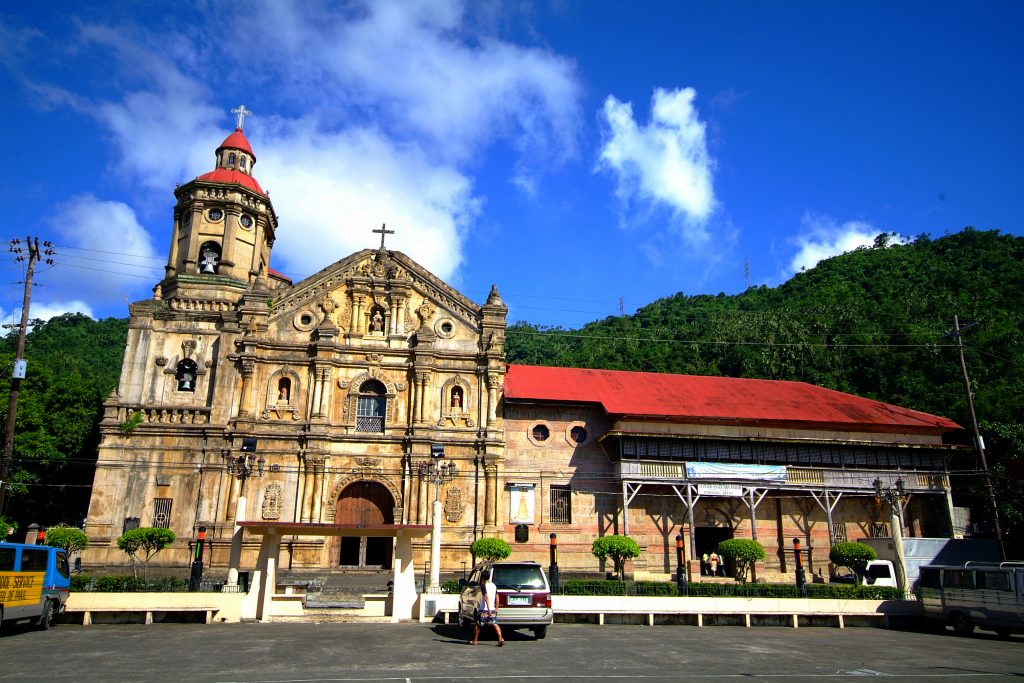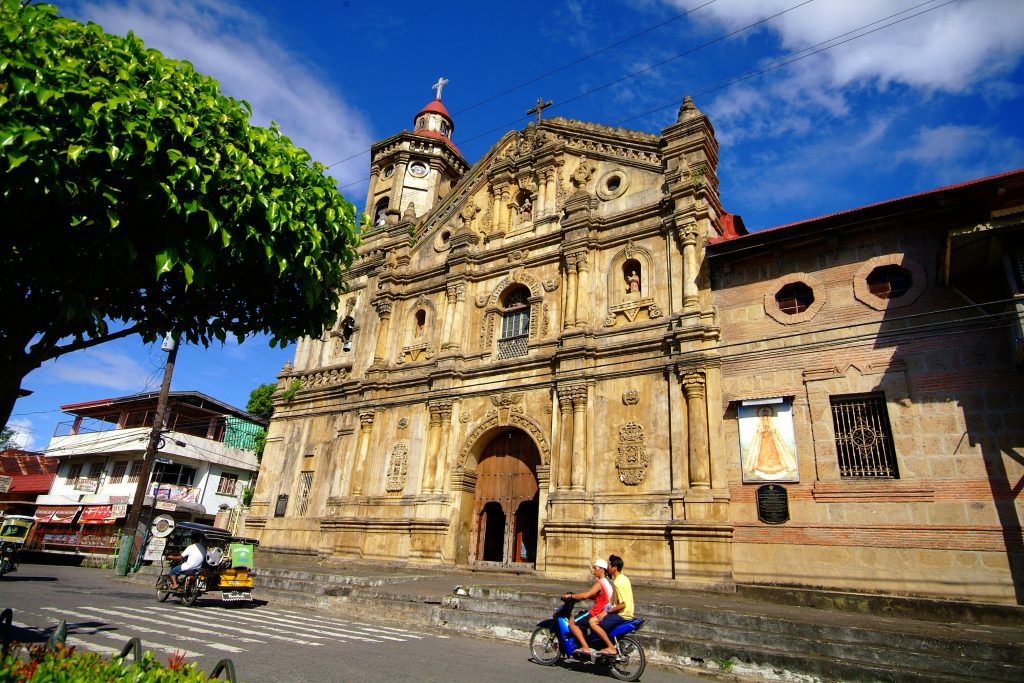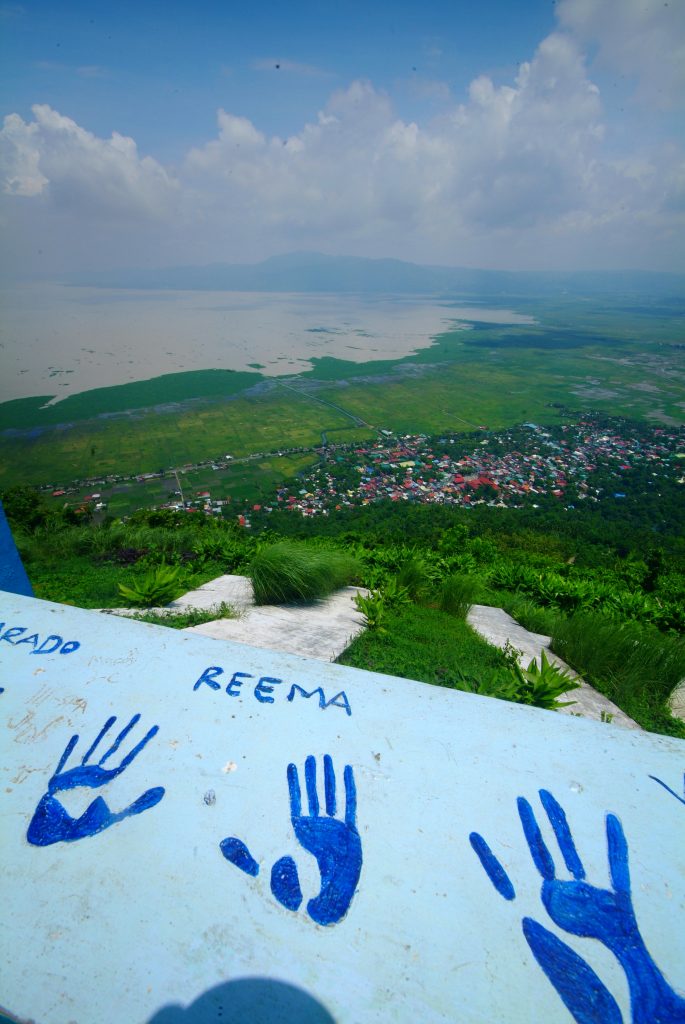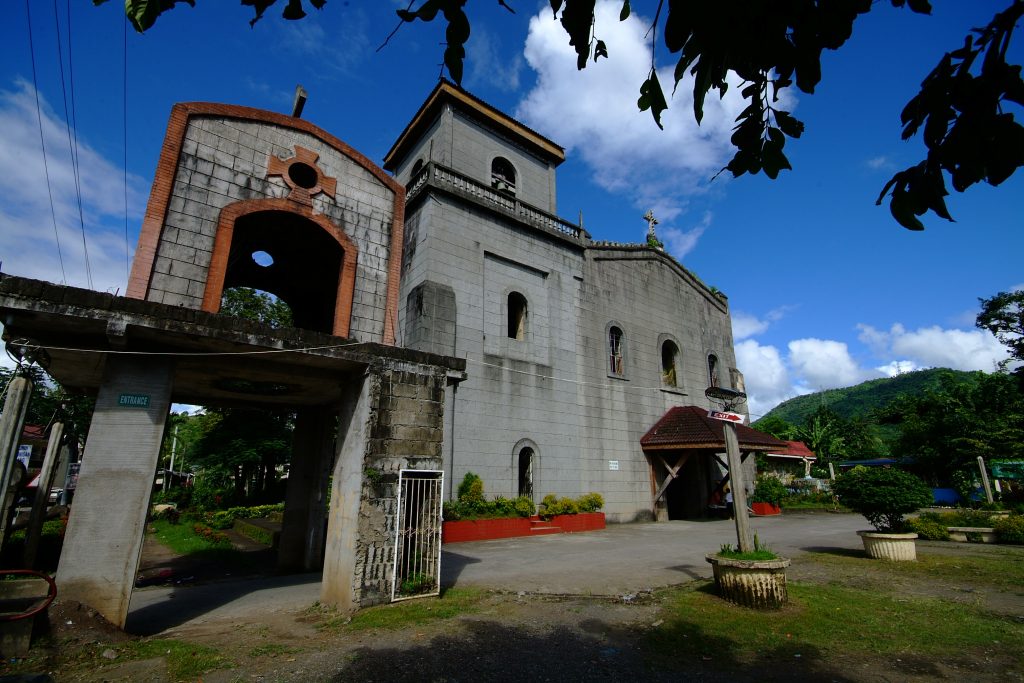Diocesan Shrine of Nuestra Señora Delos Dolores de Turumba – Pakil
Our Lady of Sorrows of Turumba (Spanish: Nuestra Señora de los Dolores de Turumba; Tagalog: Mahál na Iná ng Pitóng Hapis ng Turumba) is the image of the Virgin Mary as Our Lady of Sorrows, enshrined in Pakil, Laguna, in the Philippines.
The word turumba is from the Tagalog phrase “Natumbá sa lakí ng tuwâ” (“Had trembled in great joy”). The first turumba in the icon’s honour was held on September 14, 1788.
The image, according to tradition, belonged to some missionaries who crossed Laguna de Bay in a launch. When the launch was shipwrecked, some of its relics were washed ashore including the icon of the Virgin.
One Friday morning, some fishermen found the icon in their nets. Believing it to be a religious image, they decided to bring it to a parish church. When the men carried the small painting, they found it too heavy. They tried sailing in directions with three icon until they brought it to the shore near Pakil Church. When they headed that way, the wind and current aided their course. Upon landing, they left the heavy image on a rock so they could continue their fishing duties.
A group of women found the icon the following Sunday morning. Although it had rained during the night, the canvas was miraculously dry. When they tried to take the icon away, they could not move it; even the strongest among them, Mariangga, could not lift it. They quickly told the parish priest, who in turn called the sacristans, choristers, and churchgoers at Mass to fetch the image. As they lifted the image, it gave way. The townsfolk around begun to sing and dance, giving birth to the turumba.
The Nuestra Señora de las Antiguas was episcopally crowned by Alejandro Olalia, the Bishop of Lipa, on 23-24 May 1953.
Source: https://en.wikipedia.org/wiki/Our_Lady_of_Turumba
Ahunan sa Mt. Ping-as – Pakil
This landmark of Pakil town hosts an annual festivity known as “Ahunan sa Ping-as” celebrated every last Saturday of May, where participants climb up the Sierra Madre mountain to witness the Santacruzan and attend the Holy Mass.
At the foot of the cross, you can see the bird’s eye view of the town, which is 500 meters above sea level
The cross was erected there in 1671 in honor of Fr. Francisco Solier who used to carry a wooden cross as a devotion when climbing up the mountain of Ping-as. The wooden cross was later replaced with a concrete one and a 14 Stations of the Cross were set up along the road/trail leading to the mountain top.
When Pakil separated from Paete to become a town of its own, the people of Paete erected three crosses on top of neighboring Mt. Humarap that became the Tatlong Krus.
Source: https://www.backpackingphilippines.com/2013/03/trek-to-holy-cross-on-mt-ping-as-pakil.html
Our Lady of Nativity Parish – Pangil
The Nuestra Señora de la Natividad Parish (also Our Lady’s Nativity Parish) commonly known as Pangil Church is a Roman Catholic church in Natividad, Pangil, Laguna, Philippines. The statue of the pregnant Virgin Mary (locally known as Nuestra Señora de la O) is said to be a gift from King Carlos III of Spain.
Source: https://en.wikipedia.org/wiki/Nuestra_Se%C3%B1ora_de_la_Natividad_Parish_Church
Diocesan Shrine of San Antonio de Padua – Pila
The Church of Pila, also known as the San Antonio de Padua Parish Church, is a church dedicated to St. Anthony of Padua in the Philippines in 1578 and the first Antonine parish church in the Philippines in 1581 and probably in Asia. It is also designated as the National Shrine of San Antonio de Padua (Filipino: Pambansang Dambana ng San Antonio de Padua) of the Catholic Bishops’ Conference of the Philippines in April 23, 2019. In 1606 the Franciscans set up the second printing press of the Philippines under the supervision of Tomás Pinpín and Domingo Loag. Its titular is St. Anthony of Padua, whose feast is celebrated every June 13.
Source: https://en.wikipedia.org/wiki/Pila_Church
St. Michael de Archangel Parish – Rizal
Saint Michael the Archangel is referenced in the Old Testament and has been part of Christian teachings since the earliest times. In Catholic writings and traditions he acts as the defender of the Church, and chief opponent of Satan; and assists souls at the hour of death.
Way back from it’s history, St. Michael the Archangel was a part of Nagcarlan Laguna. On the 14th of December year 1917 St. Michael the archangel became on the diocese of Nagcarlan Laguna, and on the year 1919 Rizal Laguna was born and became a town. Then St. Michael the Archangel became the parish church of Rizal Laguna. It is located at brgy. West Poblasyon Rizal Laguna.
Source: https://wanderwithannaa.wordpress.com/2018/12/16/st-michael-the-archangel/
St. Paul the Hermit Parish Church – San Pablo City
The Cathedral Parish of Saint Paul the First Hermit, also known as the San Pablo Cathedral, is the see of the Bishop of the Roman Catholic Diocese of San Pablo located in San Pablo, Laguna, Philippines. Its titular is St. Paul the First Hermit and its feast is celebrated every January 15.
Source: https://en.wikipedia.org/wiki/Saint_Paul_the_First_Hermit_Cathedral
Shrine of Jesus in the Holy Sepulcher (Lolo Uweng) – San Pedro City
The Shrine of Jesus in the Holy Sepulchre is a 2,016-square-meter church that houses the life-sized wooden image of Lolo Uweng, a dead Christ that fishermen found on the shore of Laguna de Bay in the 19th century.
According to the shrine’s history, people built a makeshift church called the visita from bamboo strips and cogon grass for the roof. This was believed to be in 1836, based on the year inscribed on a bronze bell that, according to elders, was once hung in a belfry.
At the back of the visita is a 20-foot-deep well that never dries up. To this day, people come to draw water from the well, which is believed to have healing powers.





